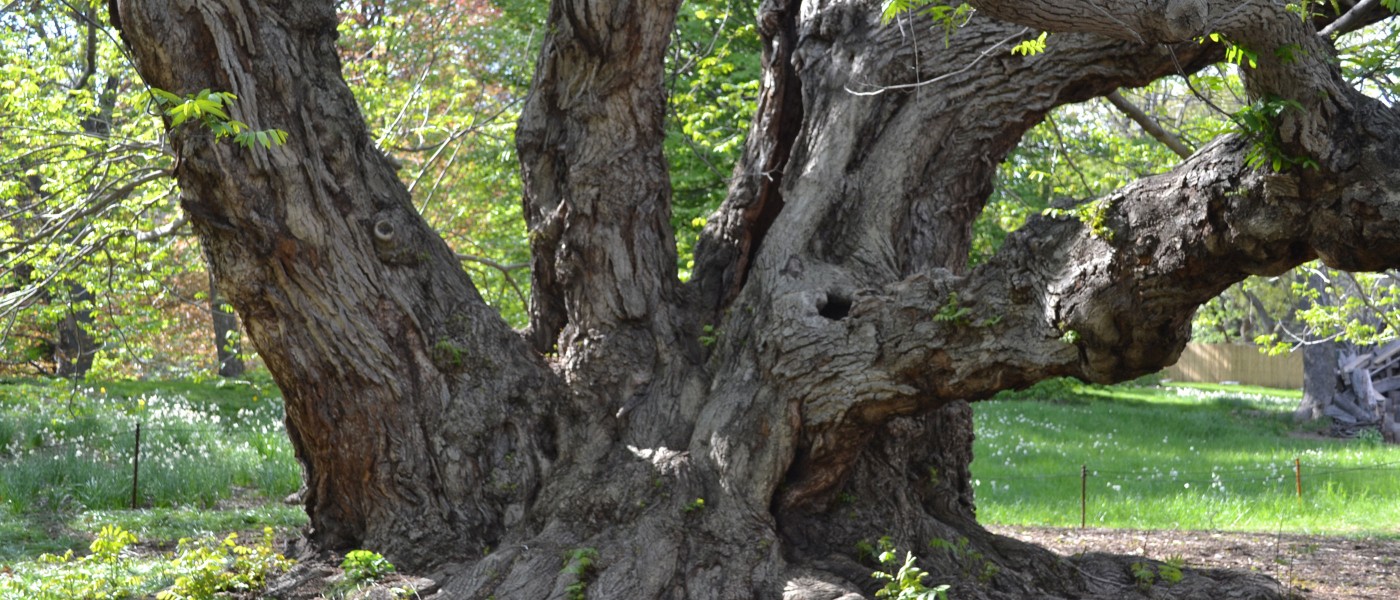Big City, Big Trees: Caucasian Wingnut
The Caucasian wingnut species (Pterocarya fraxinifolia) originated in the Caucasus region, between the Black Sea and the Caspian Sea, and was transported to Europe in 1782 by the French botanist and statesman André Michaux. The tree was greatly valued for its fast growth and its impressive branch spread, which offers excellent shade. Capable of reaching 80 feet in height and 70 feet in branch spread, this tree excels in parks and public gardens but is too hefty for the average backyard. The Caucasian wingnut's branches can attain such a length and weight that they often need a little propping up with cables and support poles.
Botanic gardens are living museums: They hold valuable collections of a wide range of specimens. But unlike paintings, sculptures, or fossil collections, plants have a life span and will eventually die. One way BBG perpetuates its collection is through asexual propagation, sometimes called cloning. Cloning trees is much easier than cloning, say, sheep. Arborists take a cutting from a branch of the parent tree, and then propagators use one of several methods to root it. This Caucasian wingnut, which is on the Great Trees of Long Island list, arrived in the Garden in 1922 and was propagated in 1978. The original, at almost a century old, is just over 60 feet tall with a branch spread about as broad as it is tall. Its trunk is almost nine feet in diameter. The younger tree was planted near the site of the new Herb Garden.
"Wingnut" may sound like a nickname for someone with extreme views, but in this context, it actually refers to the winglike shape of this tree's fruit, shown here.
There are wingnut species from other parts of the world, too, including a Japanese wingnut and a Chinese wingnut, and they are all part of the the walnut family.


